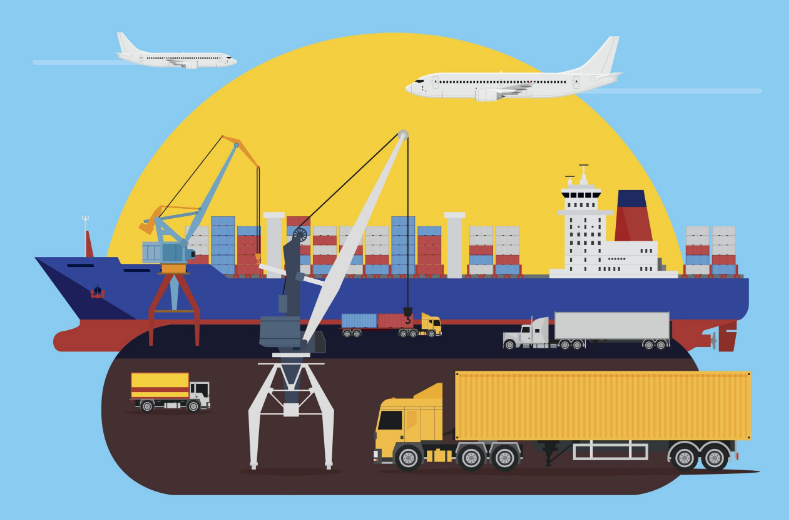With the continued growth of global trade, the peak shipping season (typically from August to December) is often accompanied by tight shipping space, rising freight rates, and port congestion. For companies engaged in the China-Australia trade of door and window accessories, ensuring a stable supply during this peak season is a key challenge.
This article will deeply analyze the logistics pain points during the peak shipping season and provide a set of exclusive door and window accessories logistics solutions to help you optimize supply chain management and ensure that goods arrive in the Australian market on time and safely.
Key Challenges During Peak Season
- Tight Shipping Space and Fluctuating Freight Rates
- During peak season, freight demand surges, and shipping companies face a shortage of shipping space, potentially leading to booking difficulties.
- Ocean freight rates could rise by 30%-50%, impacting overall cost control.
- Port congestion and high risk of delays
- Major Australian ports (such as Sydney, Melbourne, and Brisbane) are prone to congestion during peak season, resulting in longer vessel wait times.
- Customs clearance may be slowed by the surge in cargo volume, impacting delivery times.
- Cargo safety and packaging issues
- Door and window accessories are often fragile, and the bumpy and humid conditions of ocean shipping can affect their quality.
- Improper packaging can lead to damage or rust, increasing the risk of returns and claims.
- Poor supply chain integration
- Poor coordination between domestic factory production cycles, transportation, customs clearance, ocean shipping, and local Australian delivery can lead to stockouts.
Exclusive Logistics Solution for Door and Window Accessories from China to Australia
- Plan and Secure Space
- It is recommended to book space 2-3 months in advance to avoid delays caused by last-minute scrambles during peak season.
- Sign long-term agreements with established freight forwarders to secure better prices and space.
- Consider using express shipping (such as the China-Australia Express) for some shipments to shorten transit time (usually 5-10 days faster than regular ocean freight).
- Optimize packaging to reduce damage
- Shockproof packaging: Use cushioning materials such as foam and bubble wrap to protect fragile parts.
- Moisture-proof treatment: Use moisture-proof paper or vacuum packaging to prevent moisture during shipping.
- Reinforced wooden boxes/pallets: Ensure the stability of the goods within the container to reduce the impact of transportation bumps.
- Choose a stable and reliable mode of transportation
- Efficient Customs Clearance and Local Delivery in Australia
- Prepare compliance documents in advance, including product certifications (such as Australian AS/NZS standards), commercial invoices, packing lists, etc., to avoid customs clearance delays.
- Select a local Australian logistics partner to ensure efficient last-mile delivery and reduce warehousing and delivery time.
- Digital Logistics Management
- Use a logistics tracking system (such as the shipping company’s official website or a tracking platform provided by a freight forwarder) to monitor the status of shipments in real time.
- Establish an information sharing mechanism with suppliers, freight forwarders, and Australian customers to ensure supply chain transparency.
Peak Season Logistics Cost Control Strategies
- Concentrate Shipments and Reduce Frequencies
- Consolidate orders whenever possible and reduce sporadic shipments to lower unit transportation costs.
- Flexibly Select Shipping Dates and Ports
- Avoid busiest shipping dates (such as the pre-Christmas peak) and choose less popular routes (for example, departing from Qingdao/Ningbo Port, which may experience less congestion than Shanghai/Shenzhen Port).
- Leverage Free Trade Agreements to Reduce Tariffs
- Under the China-Australia Free Trade Agreement (ChAFTA), some door and window accessories are eligible for tariff concessions. Confirm HS code applicability in advance.
- Successful Case Study: Peak Season Logistics Optimization for a Door and Window Accessories Company
- Client Background: A Chinese door and window accessories exporter, primarily supplying the Australian building materials market, often faces stockouts during peak season.
- Optimization Solution:
- Locking shipping space with the freight forwarder three months in advance ensures a stable monthly capacity of two 40HQ containers.
- Using moisture-proof and shock-resistant packaging, the cargo damage rate was reduced from 5% to below 1%.
- By choosing the China-Australia express shipping line, the shipping time was reduced from 35 days to 25 days.
- Results:
- Supply stability during peak season increased by 90%, significantly improving customer satisfaction.
- Logistics costs were reduced by 15%, and profit margins increased by 8%.
FAQ
Q1: When is the peak season for shipping?
It’s usually from August to December, especially the two months before Christmas (October-December).
Q2: What certifications are required for shipping door and window accessories to Australia?
They must comply with Australian AS/NZS standards. Some products may require SAA certification. We recommend consulting a professional customs clearance agent in advance.
Q3: How can I reduce cargo damage during ocean shipping?
Optimize packaging (shockproof and moisture-proof), choose full container load (FCL), and purchase ocean insurance.
Q4: Which is better for me, less-than-container load (LCL) or full container load (FCL)?
For cargo volumes ≥10 CBM, FCL is recommended. For cargo volumes <10 CBM, LCL is acceptable. However, please note that LCL may increase the risk of damage and delays.
Q5: What should I do if I encounter port congestion?
Book space in advance, choose a fast ship, maintain communication with the freight forwarder, and relocate to a less-convenient port (such as Adelaide) if necessary.
Conclusion
Although peak shipping season presents challenges, window and door fittings companies can ensure a stable supply through scientific logistics planning, stable supply chain collaboration, and efficient customs clearance strategies. We hope the solutions in this article help you optimize your China-Australia logistics links and remain afloat during peak season!
For customized logistics solutions, please contact a professional China-Australia freight forwarder for one-on-one support!


